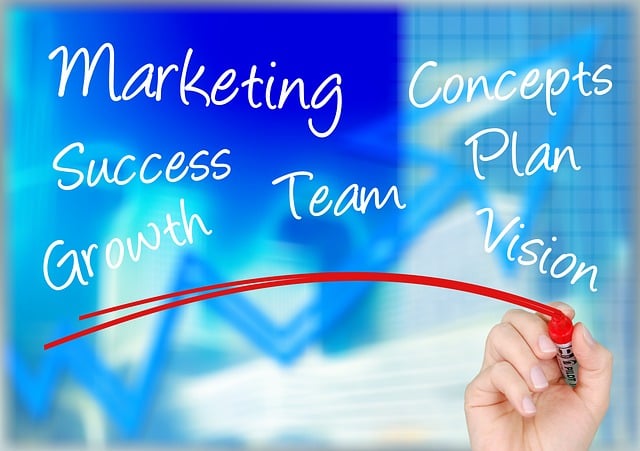AI is transforming urban mobility through predictive traffic pattern analysis, optimizing routes, and managing congestion. In addition to traffic management, AI enhances marketing campaigns with targeted advertising and member acquisition strategies for public transport, maximizing return on investment (ROI). Predictive models enable personalized user experiences based on travel habits, increasing customer satisfaction and engagement. Measuring KPIs like new sign-ups, engagement levels, and cost per acquisition is crucial for successful AI campaigns focused on member acquisition within smart cities, driving improvements in urban living standards.
In today’s digital era, smart cities are leveraging predictive tools powered by AI to manage peak hour traffic effectively. This article delves into three key aspects of this innovative approach: understanding traffic patterns with AI, optimizing transportation systems, and measuring success through AI campaign ROI for member acquisition. By exploring these sections, we reveal how advanced analytics can revolutionize urban mobility and foster community engagement in smart city initiatives.
- Understanding Peak Hour Traffic Patterns with AI
- The Role of Predictive Tools in Optimizing Transportation
- Measuring Success: AI Campaign ROI for Member Acquisition in Smart City Initiatives
Understanding Peak Hour Traffic Patterns with AI

Understanding peak hour traffic patterns is a game-changer in urban mobility planning. Artificial Intelligence (AI) is revolutionizing how cities manage transportation, offering valuable insights to optimize flow and reduce congestion during the busiest times of the day. By analyzing vast amounts of data from sensors, cameras, and GPS tracking, AI algorithms can predict traffic behavior with remarkable accuracy. This predictive capability enables transport authorities to make informed decisions about route optimization, real-time traffic light adjustments, and even dynamic pricing on toll roads or parking spaces.
Furthermore, AI’s role extends beyond improving traffic management; it contributes to the success of marketing campaigns in the transportation sector. For instance, AI can be leveraged in targeted advertising and member acquisition strategies for public transport systems. By understanding passenger behavior during peak hours, an AI campaign can ROI (Return on Investment) is maximized, ensuring that promotional efforts reach the right audience at the optimal time, thus fostering a more efficient and appealing urban mobility ecosystem.
The Role of Predictive Tools in Optimizing Transportation

Predictive tools are transforming transportation management by leveraging AI and data analytics to optimize routes, anticipate congestion, and improve overall traffic flow during peak hours. These tools analyze historical traffic patterns, real-time sensor data, and weather conditions to forecast future traffic demands with remarkable accuracy. By understanding these trends, transport authorities can implement dynamic pricing strategies, adjust public transport schedules, and direct drivers to alternative routes, leading to reduced travel times and lower carbon emissions.
Moreover, predictive models contribute significantly to the success of AI campaigns aimed at member acquisition in transportation services. By personalizing user experiences based on their travel habits and preferences, companies can enhance customer satisfaction and loyalty. For instance, offering tailored recommendations for efficient commutes or targeted promotions during peak periods can drive engagement and increase membership retention, ultimately maximizing the return on investment (ROI) for these AI-driven campaigns.
Measuring Success: AI Campaign ROI for Member Acquisition in Smart City Initiatives

In the context of smart city initiatives, measuring the success of an AI campaign focused on member acquisition is paramount. The key to gauging ROI (Return on Investment) lies in defining clear metrics and tracking them consistently. By establishing benchmarks such as new member sign-ups, engagement levels, and cost per acquisition, cities can accurately assess the effectiveness of their AI-driven strategies. Advanced analytics tools enable real-time data analysis, allowing for rapid adjustments to campaign tactics and ensuring optimal resource allocation.
Successful AI campaigns for member acquisition not only drive traffic but also foster a sense of community within the smart city ecosystem. Increased engagement and active participation from citizens contribute to a vibrant urban environment, where data-driven insights empower decision-making processes. This symbiotic relationship between AI technology and citizen involvement is what ultimately defines the campaign’s success and drives measurable improvements in urban living standards.
Predictive tools powered by AI are transforming peak hour traffic management, enhancing transportation efficiency. By understanding and forecasting traffic patterns, these tools enable smart city initiatives to optimize routes, reduce congestion, and improve overall mobility. Measuring success through AI campaign ROI for member acquisition demonstrates the tangible benefits of these innovations, fostering a more connected and streamlined urban environment.
